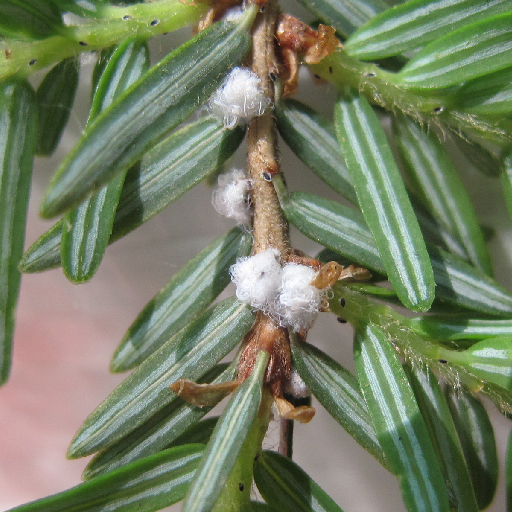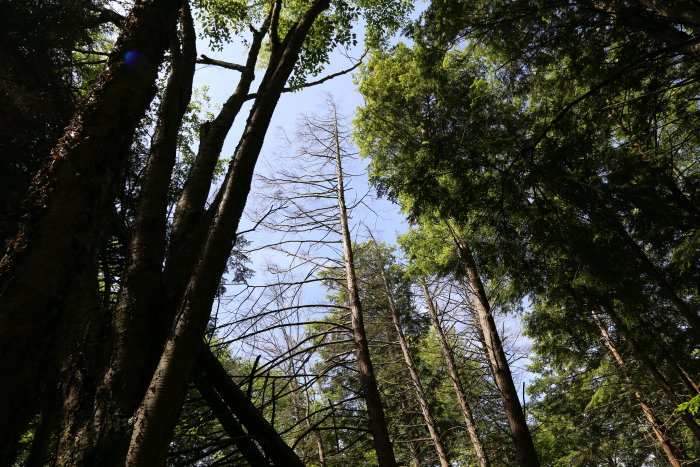Hemlock woolly adelgid
Information about hemlock woolly adelgid (Adelges tsugae), a tiny insect that can kill hemlock trees.
Overview
- Invasive — native to Asia (China, India, Japan and Taiwan).
- Hemlock woolly adelgid is an introduced species to Ontario. It has been found in Southern Ontario near Lake Erie and Lake Ontario.
- These tiny insects feed on nutrient and water storage cells at the base of needles, causing them to drop.
“Invasive” refers to a species that has moved outside of its native habitat and threatens the new environment, economy or society by disrupting local ecosystems.
Host species
Hemlock woolly adelgid feed on eastern hemlock in Ontario but also affect other hemlock species.
Characteristics and life cycle
- This tiny aphid-like insect has a complex life cycle with two generations per year, each with several larval, or nymph, stages and alternating periods of other activity.
- In North America, both generations are female and reproduce asexually.
- The nymphs of the first, “sistens” generation:
- Emerge from eggs in early summer in a mobile crawler stage that disperses in the tree to the base of needles.
- Enter a dormant stage (aestivation) until early fall when it resumes feeding and develops through four nymphal instar stages, producing a white waxy covering.
- Mature into an adult that lays up to 300 eggs in early spring.
- The eggs that hatch form the second, “progrediens” generation. In this generation, the crawlers:
- Settle on the previous year’s needles.
- Feed and produce wool for a few weeks.
- Lay 25–125 eggs in late spring that produce the next sistens generation.
- The progrediens generation also produces a winged, sexual phase (sexuparae) that leave the host tree. This phase does not survive in North America because its secondary host, tiger tail spruce (Picea torano Siebhold ex K. Koch) does not occur.

Symptoms and damage
- Commonly identified by white woolly sacs at the base of hemlock needles on new branches.
- Premature needle loss.
- Bud and shoot dieback.
- Thinning of the tree crown, which may change from dark green to greyish.
- The tree will die within 4 to 15 years of infestation.

Control measures
You can prevent the spread of hemlock woolly adelgid by:
- not moving firewood
- keeping bird feeders away from hemlock trees
To contain infestations:
- trim infested branches
- remove and burn infested trees
Some chemical and biological control methods are being studied.
Updated: April 20, 2023
Published: April 18, 2023